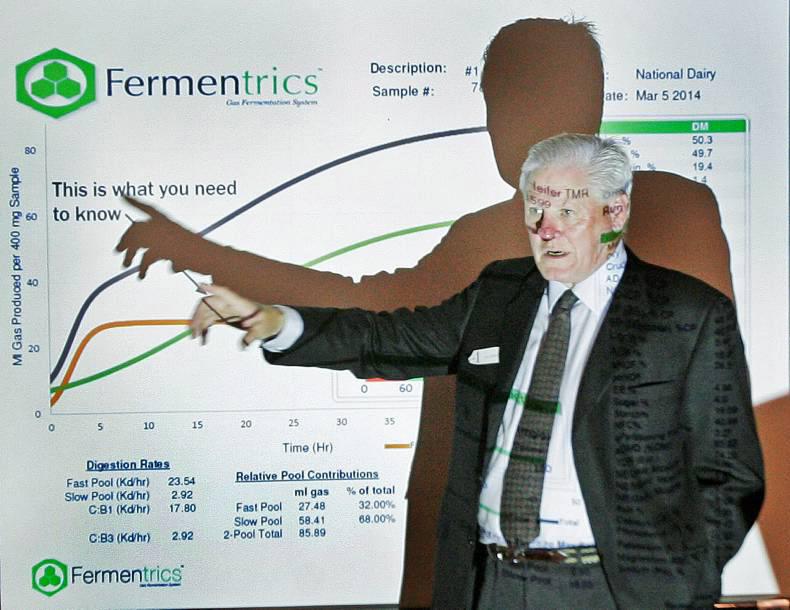Economics will demand a leap from the theoretical concept of artificial intelligence to its practical application in agriculture, according to Jay Johnston, chief executive of Ritchie Feed and Seed Inc.
Johnston is from Ontario, Canada, and was guest speaker at a breakfast seminar organised by the Northern Ireland Institute of Agriculture Science (NIIAS) in Antrim last week and sponsored by United Feeds.
He defined artificial intelligence as the study of creating computers and software capable of intelligent behaviour. Linked to this is the concept of machine learning, which allows computers to learn from vast amounts of data and calculations, and then make decisions.
Outlining a range of agricultural applications for the technology, Johnston spoke about his company, Fermentrics, which uses artificial intelligence to predict rapidly the outcome of the fermentation process in cattle. He maintained that the system can provide a level of nutritional analysis of a feed in four hours similar to that achieved in 48 hours by conventional methods.
He also spoke about systems for facial recognition of cows in dairy units that can individually monitor all aspects of behaviour in a group, as well as body condition score and feeding. When it comes to lameness, measuring the arch in the cows’ back could give an early sign of the problem.
Johnston said: “You can feed cows a lot less expensively if you know what they will and will not eat.” He also added: “If you can fix a lame cow before she shows you the signs of lameness, it can save you months of lower production.”
Another possible adoption of artificial intelligence is in the use of drone technology. Drones can now be used to provide detailed mapping of crops in fields. Other examples include grass growth monitoring, mapping of frost damage in a maize crop and also the variation in dry matter in a soyabean crop, which dictates the optimum time to harvest. With drones already able to lift up to 300lbs, a fleet of drones might one day replace combine harvesters.
Johnston argued that the capital costs of the technology will be minimised as software evolves, as happened with other technologies that are now widely adopted in industry and daily life.






 This is a subscriber-only article
This is a subscriber-only article






SHARING OPTIONS: